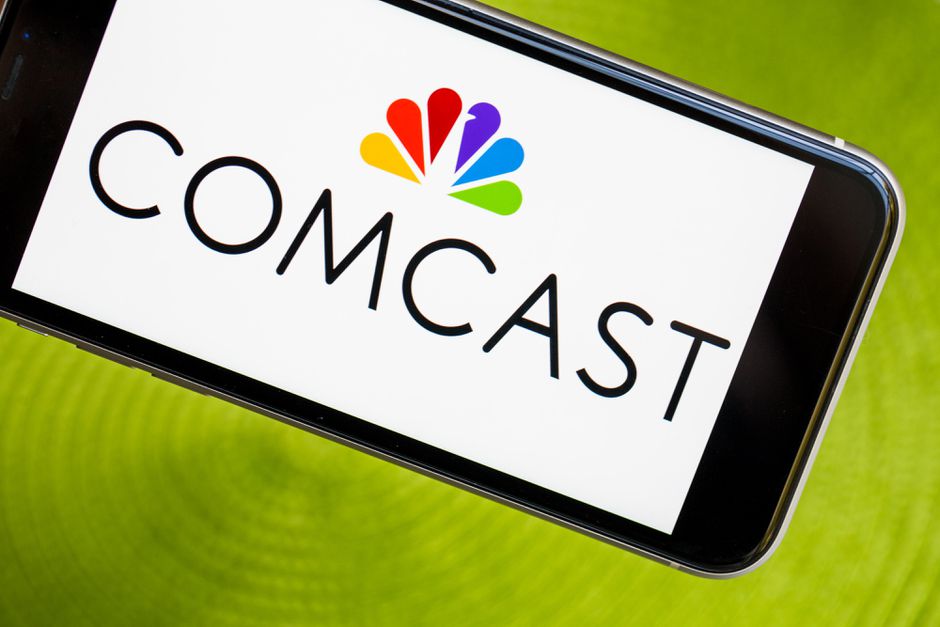By JESSICA E. VASCELLARO And SAM SCHECHNER
Comcast Corp. is testing a new service that knits together television and the Internet, as the U.S. cable giant goes after rivals that threaten to undermine its business.
Users can watch and search a smattering of Web video through their televisions and search across live, on-demand and recorded programming.
The service, known to participants as “Spectrum” and internally as “Xcalibur,” doesn’t let participants freely browse the Web, though they do have some basic connections to social networks to comment on television shows, the people familiar with the matter said.
While the test is small, it marks a significant step in the efforts of the largest TV distributor in the U.S. to adapt to the rise of Internet programming and the cohort of devices—such as Roku boxes and Apple TV—that make it easier and more convenient to watch.
“We are testing many technological approaches to understand how best to meet consumer interests, and this small trial is one of those experiments,” a Comcast spokeswoman said in an emailed statement.
The selection of Internet content available through the test is limited, but Comcast could expand it over time, according to people familiar with the matter. One of these people said a decision whether to launch the service hasn’t been made, however, and the company hasn’t determined how it would price it if it proceeds.
The move is partly defensive. Cord cutting—the decision by customers to drop their cable service—has become a reality for cable operators for a variety of reasons, including the weak economy as well as the ease and lower cost of products and services from new companies delivering premium video online and through Internet-connected televisions and hardware.
Those efforts, including forays from giants like Google Inc., Microsoft Corp., and Apple Inc., haven’t displaced traditional TV so far. Cable companies are quick to point out that the new players may struggle to manage the costs of delivering massive amounts of content without the infrastructure cable operators have. But they are emerging as stronger competitors as they procure more content and strike partnerships with video brands like Netflix Inc.
Other traditional TV distributors are starting to move in this direction, too. Verizon Communications Inc.’s Fios TV service offers apps for YouTube, Facebook and Twitter. AT&T Inc.’s U-verse has TV apps for sports, yellow-pages and other functions, and is testing some for social media.
DirecTV has been pushing its subscribers toward Internet-connected digital-video recorders that can record television shows and provide other services such as accessing websites such as the photo-sharing service Flickr. It expects that 40% of its subscribers will be Internet-connected by the end of 2013.
In an interview last week, Time Warner Cable Chief Executive Glenn Britt said the company could begin delivering its video service over the Internet directly to Internet-connected TVs without cable boxes as soon as 2011.
“We are embracing all this changing technology, not resisting it,” he said.
Sam Rosen, a senior analyst with ABI Research, said cable companies have no choice. “If you don’t put Netflix on your box, it is still going to get in the home, but it is going to be less associated with your brand,” he said.
The number of U.S. households that subscribe to cable and other paid TV services fell for the first time since the advent of cable over the past two quarters—by about 335,000 households out of about 100 million, according to data provider SNL Kagan.
Comcast and other cable operators say those declines are predominantly among homes opting to watch TV over the air rather than online. Comcast is the largest paid television operator in the U.S., with 22.9 million U.S. video subscribers at the end of the third quarter, 21% more than of the second largest U.S. TV-service provider, DirecTV.
Comcast says it lost approximately 275,000 video customers in the third quarter of 2010. The company expects further declines in video customers for the remainder of the year.
The test comes as Comcast’s stance toward Internet-video providers is being scrutinized by regulators, as it attempts to acquire control of NBC Universal from General Electric Co. The Justice Department and the Federal Communications Commission have been pushing for conditions that would prevent Comcast from withholding NBC Universal’s content from online competitors, according to people familiar with the matter. The deal could close by the end of the year, these people said.
Comcast has been working on the new video initiative for more than a year, with a team reporting to Sam Schwartz, a senior executive who previously ran Comcast Interactive Capital, the cable giant’s investing arm, according to people familiar with the matter.
Comcast’s experimental set-top boxes are code-named “Parker” for “Spider-Man” hero Peter Parker, according to the people familiar with the matter. In a technology shift, the boxes can receive content via the technology computers use to connect to the Internet, known as IP technology, although television channels and on-demand video are still delivered through traditional cable technology.
In addition to facilitating access to Web content, IP capabilities could help the company develop and roll out new interfaces and guides faster, according to people familiar with the matter.
Rolling out more IP technology could open up new advertising opportunities for the company, allowing Comcast to target ads at individual set-top boxes much in the same way online ads are delivered to individual Web browsers. A person familiar with the matter said advertising isn’t part of the current test.
The new interface Comcast is testing is intended to be more fluid and graphical. A menu displays a strip of images representing recently watched channels and programs, which expand when selected. A redesigned “guide” displays a cleaner grid of programs by network and airtime so that it’s possible to watch TV on part of the screen while browsing.
The new technology could carry risks. There have at times been snags in Comcast’s test, including difficulty sending video-on-demand to the new set-top boxes, a person familiar with the matter said.
The new service comes as Comcast has been trying to expand its service to other devices. It recently unveiled Xfinity TV, which allows users to access some of the cable content they subscribe to on computers and which it plans to expand to iPad and tablets.
Copyright 2010 Dow Jones & Company, Inc. All Rights Reserved



